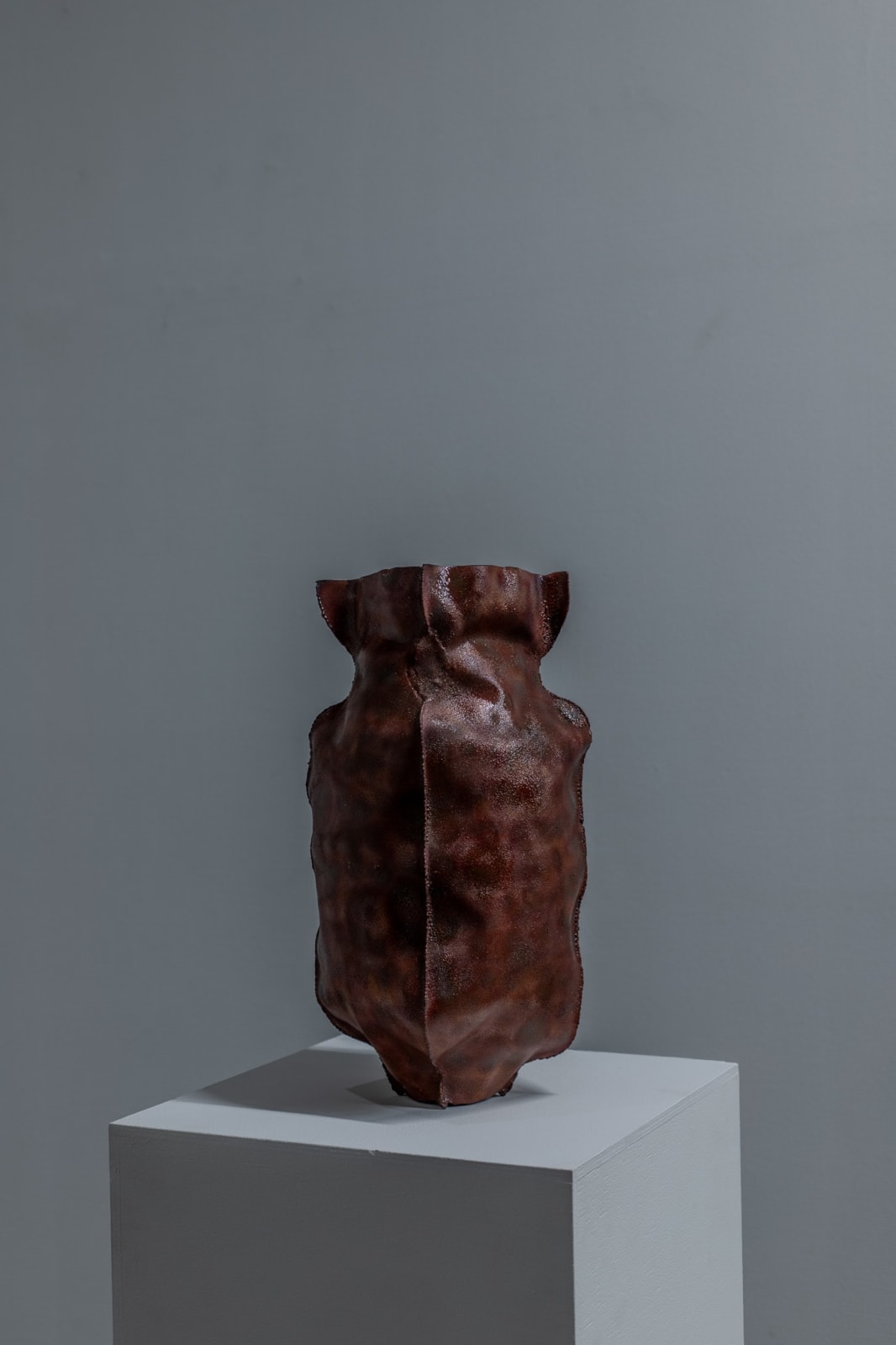Yochiya
Shippo vase 5, 2023
Cloissoné - glass glaze on copper
21 x 21 x 45.5 cm
8 ¼ x 8 ¼ x 18 in
8 ¼ x 8 ¼ x 18 in
Unique
Further images
The gallery presents Shippo vases by Japanese design studio YOCHIYA an artistic duo of Yoichiro Hatanaka and Yachiyo Kawana, based in Tokyo. Shippo carries an ancient craft of cloisonné, known...
The gallery presents Shippo vases by Japanese design studio YOCHIYA an artistic duo of Yoichiro Hatanaka and Yachiyo Kawana, based in Tokyo. Shippo carries an ancient craft of cloisonné, known from the times of the ancient Egypt which later appeared in Caucasus, Byzantium and became popular in China. From China cloisonné was brought to Nagasaki by Dutch traders, who were the only Westerners with exclusive access to Japan for almost two centuries.
Cloisonné ware is a craft in which a glassy glaze is applied to silver or copper and enclosed into the small sections separated by a wire. In Byzantine pieces, and even more in Chinese work, the wire by no means always encloses a separate colour of enamel. Sometimes a wire is used just for decorative effect. Japanese cloisonné enamel reached a technical peak, producing items more advanced than any that had existed before. In Japan cloisonné enamels are known as shippō-yaki. ‘Shippo’ – means 'Seven Treasures', and refers to the Buddhist texts, where treasures include: gold, silver, emerald, coral, agate, lapis lazuli, giant clamshell, glass, and pearl. The Japanese applied this expression to the rich colours found on Chinese enamel wares and later to those they made themselves.
YOCHIYA explored the untapped possibilities of cloisonné by combining improvisational and serendipitous modern techniques such as welding and hydraulic pressure, rather than relying solely on traditional techniques. Sculpting as if drawing, and embracing the accidental moments that arise, led to many fascinating discoveries.
Cloisonné ware is a craft in which a glassy glaze is applied to silver or copper and enclosed into the small sections separated by a wire. In Byzantine pieces, and even more in Chinese work, the wire by no means always encloses a separate colour of enamel. Sometimes a wire is used just for decorative effect. Japanese cloisonné enamel reached a technical peak, producing items more advanced than any that had existed before. In Japan cloisonné enamels are known as shippō-yaki. ‘Shippo’ – means 'Seven Treasures', and refers to the Buddhist texts, where treasures include: gold, silver, emerald, coral, agate, lapis lazuli, giant clamshell, glass, and pearl. The Japanese applied this expression to the rich colours found on Chinese enamel wares and later to those they made themselves.
YOCHIYA explored the untapped possibilities of cloisonné by combining improvisational and serendipitous modern techniques such as welding and hydraulic pressure, rather than relying solely on traditional techniques. Sculpting as if drawing, and embracing the accidental moments that arise, led to many fascinating discoveries.







